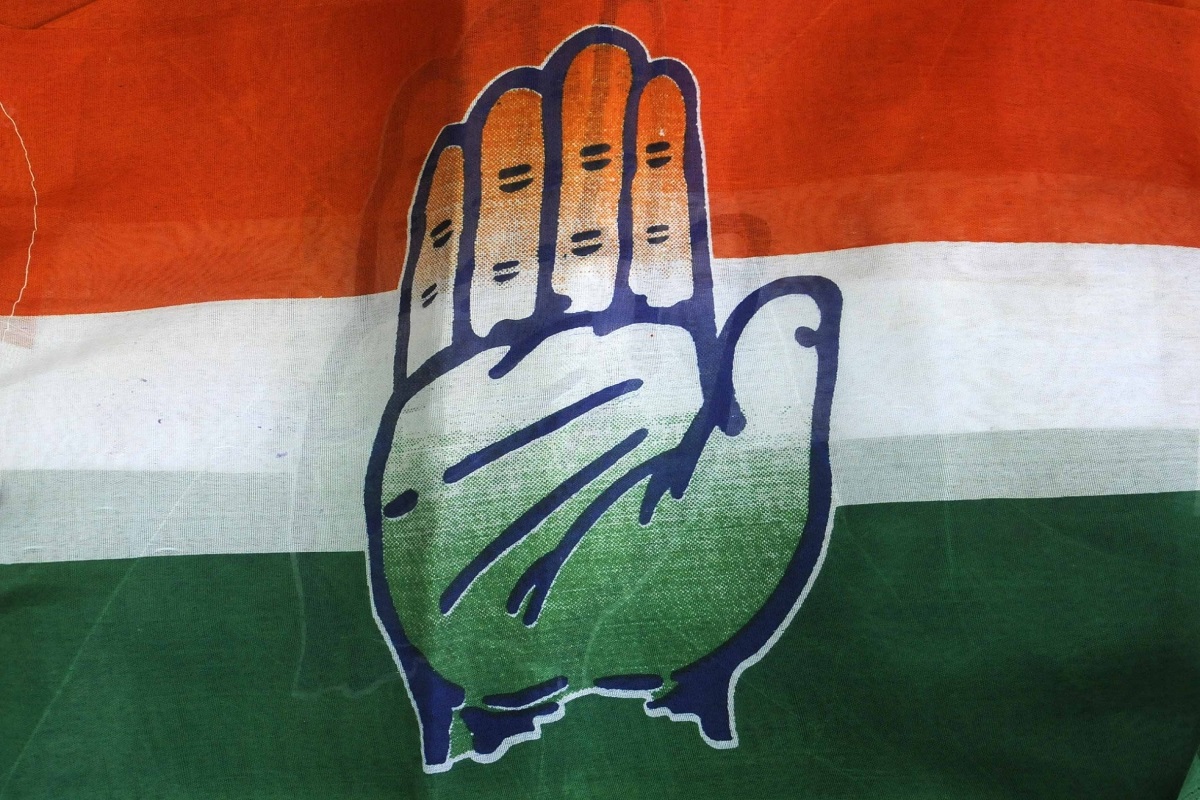Nepal Policy
India’s relationship with Nepal has always been complex, shaped by historical, cultural, and geographical factors.
The party has less than 100 MPs (87) in both the houses put together. It has only 764 MLAs as compared to the BJP’s 1432 MLAs. The Congress has been decimated in states where regional parties have emerged. In crucial states like Uttar Pradesh, it has been reduced to single digits and failed to open its account in Andhra Pradesh, West Bengal, and Delhi.

Congress. (File Photo: IANS)
The Grand Old Congress party turned 137 last Tuesday. Party president Sonia Gandhi unfurled the flag at the Congress headquarters even as the party bracing itself to face the challenges ahead.
The Congress has resolved to regain lost ground ahead of 2024 and the upcoming Assembly polls. Sonia Gandhi gave a spirited speech on the occasion and said, “Let there be no doubt over our steadfast resolve. We never have, and we will never compromise on our fundamental beliefs that are part of our glorious legacy.”
Advertisement
Ironically the party is still living on its past glory. Congress leaders claim that the party will write a new chapter before the 2024 polls. It lost in both 2014 and 2019 and some state assembly elections as well. It is also facing a leadership crisis, factionalism, and indiscipline.
Advertisement
Founded in 1885, Congress was dominant in the years since Independence and ruled for 54 years. Congress leaders who became Prime Minister included Jawaharlal Nehru, Lal Bahadur Shastri, Indira Gandhi, Rajiv Gandhi, P V Narasimha Rao and Dr Manmohan Singh. Congress lost its supremacy in the 1967 elections. Since then, it has seen ups and downs. The party’s contribution cannot be forgotten as it spearheaded the Independence movement and won freedom in 1947.
It integrated Puducherry from the French and Goa from the Portuguese. It also merged 565 small and princely kingdoms to create an Indian state. Nehru had vision and created credible atomic energy and science institutions. Indira Gandhi brought the Green and White revolutions. She also won the Bangladesh war and attempted the Pokhran blasts. Rajiv Gandhi tried to modernize India and take it to the 21st century by enacting progressive laws. Narasimha Rao gets the credit for economic liberalisation, panchayat raj law, recognizing Israel, his ‘Look East policy, and laying the foundation for many other visionary projects.
In his ten-year rule, Manmohan Singh signed the Indo-US nuclear policy and kept the economy at 8.5 per cent GDP. It is not that they had not committed blunders like the Chinese war, entering the Golden temple, Shah Bano case, Ayodhya, etc. Sonia Gandhi, too had contributed to the party, as it was she who kept the Congress united and checked the erosion in 1998. She also brought the party to power not once but twice (2004 and 2009).
The same Sonia is unable to prevent the slide since then or find a solution to the present leadership crisis. Despite the slide, the Congress returned to power in many big states including Rajasthan, Punjab, Madhya Pradesh and Maharashtra, in the last round of elections. Currently, the Congress is ruling in Punjab, Rajasthan and Chhattisgarh, while in two other states, Maharashtra and Jharkhand, it is part of the ruling coalition.
The party has less than 100 MPs (87) in both the houses put together. It has only 764 MLAs as compared to the BJP’s 1432 MLAs. The Congress has been decimated in states where regional parties have emerged. In crucial states like Uttar Pradesh, it has been reduced to single digits and failed to open its account in Andhra Pradesh, West Bengal, and Delhi.
While Congress has shown no eagerness to play the role of opposition, the multiple power centres of the Gandhi family are only creating more confusion than coherence. The BJP, which had come a cropper in 2009 with just 18.80 per cent of the national vote share, rose stupendously in just five years. The party won 31 per cent vote share and 282 seats in Parliament in 2014, and about 37 per cent (303 seats) of the votes in 2019.
Congress lost its narrative in between. The time has come for Congress to propagate its position on critical political and economic issues, growth and welfare. The Congress is the only challenger to the BJP nationally. If it gets above 25 per cent of the vote from the present 20 per cent, national politics will alter.
There is a direct fight between Congress and the BJP in 200-225 seats. In the rest, the Congress needs solid regional allies. Before 2024, 16 Indian states will go for polls. There will be seven early this year, including Uttar Pradesh. In 2023, we will have nine, including big states like Madhya Pradesh and Rajasthan. Barring Uttar Pradesh, the ongress will be the BJP’s main rival in all these. The Congress’s decline is very much of its own making. The Party’s high command culture has inhibited the growth of state units.
With chief ministers and PCC heads appointed (or dismissed) from Delhi, talented leaders have no incentive to cultivate grassroots support. Rootless leaders have been appointed to crucial positions. Even now all is not lost for Congress if it can pull up its socks. Even today, it has a chance to revive, as almost every village has a Congressman. It has to find a new narrative, catchy slogans, and decisive leadership to bring confidence in the voters. Or else it will disintegrate further.
Advertisement